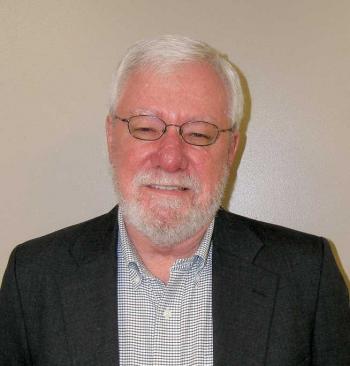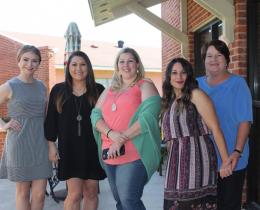
C’est Vrai: Fabacher influential rice farmer
By: Jim Bradshaw
Roberts Cove is known as the home of a substantial settlement of German émigrés who helped to create the commercial rice industry in southwest Louisiana. But they were not the only Germans to settle here and see the possibilities of rice culture. The man who some claim to be the true pioneer of the modern industry planted his rice on Prairie Faquetaïque between Bayou des Cannes and Bayou Mallet.
When the railroad reached the south Louisiana prairie in 1880, Joseph Henry Fabacher was well established as a rice farmer, ready to capitalize on the rails that would bring his crop to market.
Joseph was born in New Orleans in 1858, the son of Franz Joseph Fabacher, a native of Busenberg, Germany, and Magdelena Frey, a native of Alsace. In 1871, Franz, Magdelena, and their six children, along with Zeno Huber and some other Germans, moved from New Orleans to Prairie Faquetaique, to land that was generally considered to be of little value.
Franz Fabacher gave up farming, sold all his property, and moved back to New Orleans in 1878, taking 19-year-old Joseph with him. But Joseph liked the prairie life and—according to one account—kept running away from New Orleans until his father finally allowed him to move back to the prairie to farm rice.
He apparently had a good idea. The St. Landry Democrat of September 18, 1880 reported: “At the lower end of Faquetaïque Prairie, at what is usually called ‘German Settlement’ the land has always been considered completely worthless. But this year about 4,600 barrels of rice will be produced in that neighborhood and within a very small compass, not extending up the prairie which is quite narrow here--not more than three or four miles. This rice in the ‘rough’ will net about four dollars per barrel. So we have here a small neighborhood where they used to produce absolutely nothing for sale, a revenue of $16,000. The rice lands in this neighborhood, the marshes, which were once considered not only worthless but a nuisance, are now the most valuable: and it will not be long before they cannot be bought for any reasonable price.”
Two years later, in 1882, Fabacher became the first farmer to grow what is known as “upland rice,” which is grown on dry higher land where reservoirs held rainwater to be used in irrigation. That year’s crop turned a good profit, and Fabacher used the money to add 162 acres to his farm. It would eventually grow to more than 600 acres.
In 1885, Fabacher was the first to drill a deep water well to irrigate his crop. That also proved successful and by 1893 he had three wells. These wells were big enough to drop a water pump run by a steam engine to the bottom. Using the water from the well to fuel the engine, the pump could pump fresh water 24 hours a day into a complex series of canals that irrigagted the fields.
When the Midland-Eunice Railroad was completed in 1894, Fabacher built a warehouse next to the railroad tracks and opened his rice storage and shipping business transporting the local farmers’ rice by railroad to be milled in Eunice and Crowley, and their milled rice was then transported worldwide.
In 1891, historian and biographer William Henry Perrin described Fabacher as a “planter and merchant, living twelve miles north of Crowley.”
According to Perrin, “It was through his exertions that rice culture, which is now Acadia’s best paying industry, was introduced into the parish.”
In 1879 he sold his plantation and returned to New Orleans, where he went into the restaurant business, but returned to the prairie by 1891, when, Perrin said, he continued to farm 125 acres of rice and “also, on a less extensive scale, raises corn and oats.”
He also had “a stock of general merchandise on his farm, in value about one thousand eight hundred dollars, and is doing a good business.” Perrin said. Fabacher was also the post-master of Canal, as the Eagan area was once called.
I haven’t seen the records, but you can bet that one of Joseph’s good customers was his brother Lawrence, who was born near Crowley in 1863 but left the farm for New Orleans, where he established Fabacher’s Restaurant on Royal Street. He sold the restaurant to his brother, Peter, in the early 1890s and used the money to set up the Jax Brewery, which became the largest brewery in the South.
You can contact Jim Bradshaw at jhbradshaw@bellsouth.net or P.O. Box 1121, Washington LA 70589.
- Log in to post comments

